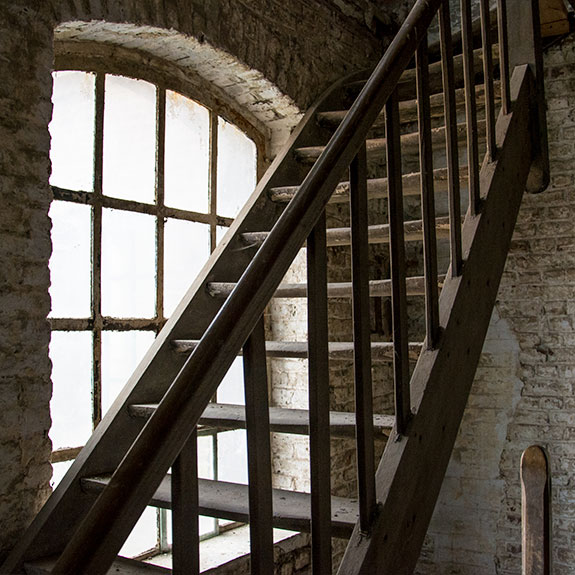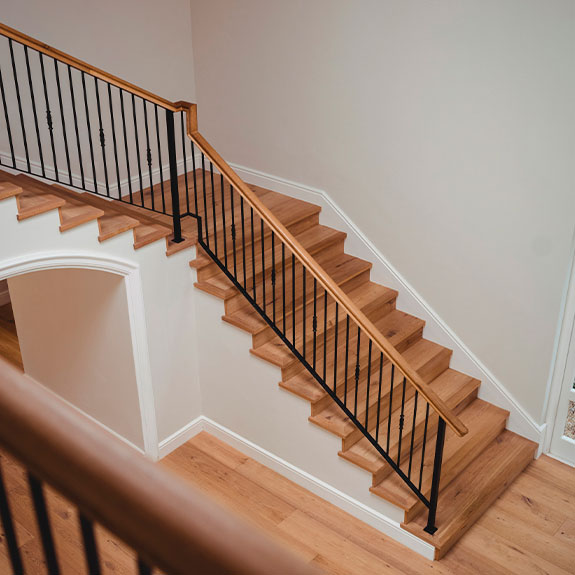Renovating old staircases is a great opportunity to breathe new life into an essential part of the home, without losing its original essence and character. Whether for aesthetic, structural, or functional reasons, a renovated staircase can become the centerpiece of any space. In this guide, you’ll discover how to approach this process in a practical and effective way, preserving its original character while introducing modern improvements.
Why Renovating Old Staircases Can Completely Transform Your Home?
Renovating an old staircase isn’t just about looks. It’s a project that impacts safety, daily comfort, and the overall style of the home. When a staircase is well-designed and restored, it becomes a key architectural feature—able to connect rooms not just physically, but visually and emotionally too.
Moreover, these staircases are often found in homes with history, so renovating them is also a way of honoring architectural heritage. Preserving the structure, type of wood, or decorative details like wrought iron railings can be the link between the old and the contemporary.

Evaluate Before You Renovate: Diagnosis and Planning
Before jumping into changing materials or painting steps, it’s essential to thoroughly assess the condition of the staircase. An old staircase might have hidden structural flaws, like wood weakened by moisture, poorly fixed joints, or imbalanced bases.
A professional diagnosis should answer questions like: Is it structurally safe? Are the steps level? Do the treads and risers meet safe and comfortable measurements? Is there a risk of slipping or lack of support?
Also, if major changes are planned—such as altering the slope, width, or location of the staircase—it will be necessary to apply for building permits and submit a certified technical project.
Materials with History or with a Future: What to Choose?
Wood: Timeless Warmth
Old staircases are often made of solid wood. Fortunately, wood is one of the most forgiving materials when it comes to staircase restoration. It can be sanded, treated against woodworm, stained, painted, or varnished with spectacular results. Even if it’s heavily damaged, replacing just a few steps may be enough to preserve its essence without needing a full replacement.

Tiles and Stone: A Decorative Second Skin
Cladding steps with hydraulic tiles or natural stone is a trend that blends tradition with design. Stone provides durability, while tiles allow for bolder aesthetic choices. They’re perfect for Mediterranean or updated classic homes.
Glass, Steel, and Microcement: Contemporary Aesthetics
If the goal is to modernize a staircase without losing functionality, materials like glass for railings or microcement for cladding can radically transform the appearance of an old staircase—especially in homes with a more minimalist or industrial style.
Restore or Transform: Two Valid Paths
When dealing with an old staircase, you can take two different approaches: restore or transform.
Restoring means returning the staircase to its original condition using materials and techniques that are as faithful as possible. This is ideal when the staircase has significant emotional or historical value. Sanding, treating the wood, replacing small pieces, or reinforcing steps without altering the structure are common actions.
Transforming, on the other hand, aims to adapt the staircase to a new aesthetic or functionality. This could include painting in bold colors, replacing the railing with a modern structure, adding LED lights to the steps, or completely changing the cladding.
Integrated Lighting: Design and Safety in Equal Measure
A well-lit staircase is not only more beautiful, but also significantly safer. Especially in homes with limited natural light or narrow staircases, adding lighting is essential.
–LED under steps: Discreet, efficient, and low consumption. Ideal for floating stairs or minimalist designs.
–Wall-mounted spotlights: Provide side lighting without glare. Perfect for creating warm atmospheres.
–LED strips on handrails: Add a modern and elegant touch while being practical for nighttime use.
Railings: The Detail That Changes Everything
Few elements can transform a staircase as dramatically as the railing. It can go from being an invisible part to becoming the main decorative feature.
-Tempered glass: Adds visual space and a modern feel.
–Steel or wrought iron: Can be refreshed with modern paint colors to blend into new styles.
–Classic wood: Restored with contemporary varnishes or combined with other materials, it preserves its -essence while adding freshness.
Redesigning Dimensions: Comfortable and Safe Steps
Old staircases don’t always meet today’s ergonomic standards. Narrow treads or overly tall risers can make going up and down uncomfortable—or even dangerous.
Renovating a staircase to adjust these dimensions is a more complex intervention, but highly effective. Widening the tread, softening the slope, or adding intermediate landings can radically improve daily use.
Renovating old staircases isn’t just a matter of aesthetics. It’s an opportunity to preserve the soul of a home, adapt it to modern times, and significantly enhance daily comfort and safety. Whether through a faithful restoration or a bold transformation, a well-executed project can turn a forgotten staircase into the heart of the home.
At ParatuReforma, we help you make the best decisions, combine materials, play with light, and bring to life the change your home needs. Because a staircase is not just a structure—it’s a journey, a story, a statement of style.
Is it better to restore or replace an old staircase?
It depends on the condition. If the structure is solid and the design has value, restoring is more economical and sustainable. In cases of severe damage or very uncomfortable design, replacement is recommended.
What materials are safer for interior stairs?
Non-slip wood, rough stone and microcement are safe. Avoid smooth or highly polished materials without anti-slip treatments.
Can I do the renovation myself?
Small interventions such as painting or vinyls can be done. For structural or complex changes, it is always better to rely on professionals.


